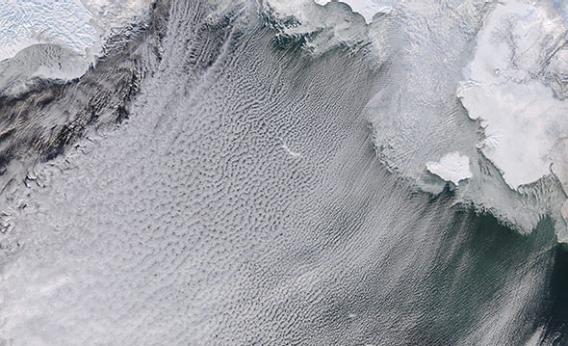Create a free profile to get unlimited access to exclusive videos, sweepstakes, and more!
Cloud Streets Bering Down

I love odd and unusual cloud structures, especially when they form interesting patterns. There are lots of different kinds, but when you’re looking down from orbit, I think cloud streets are the coolest.
“Cloud streets?” you ask. “What are those?”
Why, they are these:
That is the view from NASA’s Aqua satellite, designed to watch our planet’s water. It’s part of the critical (and politically threatened) Earth Observing System, birds that keep track of the Earth’s water, air, land, and climate.
That shot (go grab the much embiggened version, which is astonishing) was taken over the Bering Sea, and is centered about halfway between Russia on the left and Alaska on the right. The little squiggly island just above center is St. Matthew Island, and you can see part of the Aleutian Islands arc to the lower right.
The cloud streets are the long, linear fingers of clouds flowing down and to the left (roughly southwest). I’ve described them before; they form when cold air from over the land blows offshore over warmer water. The air over the water is rising, but the cold air acts like a lid. The warm air hits it, gets spread out to the sides, then starts rotating in long cylinders. Here’s a diagram:
Each “street” spins in an opposite direction, and the rotation can be stable for hundreds of kilometers. They occur anywhere cold land blows air onto warm waters, so they appear over Greenland’s coasts, the Great Lakes, and obviously Alaska. I don’t think I’ve ever seen this for myself; my maritime experience hasn’t included steaming off of a wintry location. Although the scale is pretty big, it must be neat to be under these. They probably look like mackerel clouds but on a much larger scale.
I didn’t know these existed until I became a satellite photo nerd just a few years ago. It’s amazing what nature can dream up, and what we can see when we make the effort to look.


























